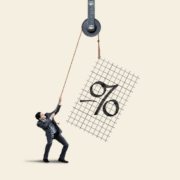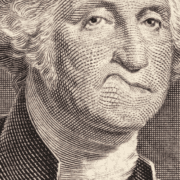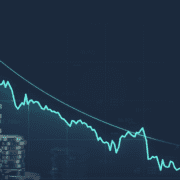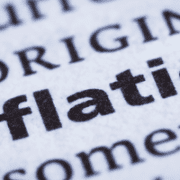Textbook Falling Interest Behavior
This is a textbook case. Well, it would be if there was a textbook that presented the dynamics of the rising and falling interest rate cycles.
Costco is spending over a quarter billion dollars, to make a capital investment in chicken processing. This is not the typical entrepreneurial investment, which seeks to increase margins by serving an unserved or underserved demand.
This is an investment made with conscious intention to drive prices down.
Costco is making a huge investment (I assume with borrowing dollars) to drive the price of rotisserie chicken down. Nearly every critic of the Fed cries about inflation, yet this article casually mentions that Costco has not raised the price on its hot dog and soda combo since the mid 1980’s. And now Costco is driving down the price of another popular food.
This does not mean the dollar is going up–the dollar is not 1 / chicken. It means the value of capital investment is going down. We don’t know the chicken market, but we assume there is no shortage of capacity. Costco is adding capacity for another 100,000,000 chickens a year. This will surely pressure the yield on all extant chicken processing plants.
Yields under pressure. Feeding investor capital to consumers. These are textbook symptoms of the falling interest rate trend.









Keith, I love the work you do for us and reading your blog is like taking a graduate course in economics.
In this instance, there may not be quite as direct a link between investment and price destruction as would usually be found. As I understand Costco’s business model, they mark up the goods they sell enough to cover their operating costs and treat membership fees as their profit. I know that’s simplified and may not be entirely accurate but that’s what a Costco employee explained to me a long time ago. If Costco is increasing chicken capacity by 100,000,000 it might be more to keep prices from rising than to push them down, which is two sides of the same coin. Taking into account my rate of Costco chicken consumption, their additional capacity might only be 1 or 2 chickens per member per year. Chickens are a staple food item worldwide and Costco has a history of bringing production of steady demand items in-house and becoming more vertically integrated. If they can do that with cheap credit instead of equity with a steadily rising dividend, it probably works out for them.
This stumps me. Costco makes money on its membership fees, but a hyper thin margin on cost of goods sold, but it turns over its inventory more than almost any retailer. Returns on capital are high.
But vertically integrating into chicken processing? I don’t quite get it. A lot of upfront investment and the payback?
There are some unanswered questions from Keith’s report, like whether the new chicken processing capacity will be US-based or foreign. If foreign then being in control of the production chain makes much more sense and better quality control. The payback is when people bring their Costco roast chicken home to their small apartment and all their neighbors can smell it and go join Costco too. I’m just speculating here, I don’t really know.
What I do know is that the money I save buying my gas at Costco literally pays for my annual Executive membership which I think is up to $120 now. So all my other purchases are literally cost plus 5% (or whatever). Compare that with your grocery store markups.
They say it tastes like chicken.
I question the wisdom of investing in poultry farms. Concern is being raised about these kinds of chickens. Arsenic, antibiotics from roxarsone, caffeine and a host of toxic chemicals are beginning to make consumers a little leery about eating these chickens. Here is just one link Pub Med in case you think I’m just passing along hearsay. https://www.ncbi.nlm.nih.gov/pubmed/22244353 Sure, most people aren’t going to dig up information for themselves, but word gets out eventually.
Investing a quarter billion dollars in this kind industry seems a little like pulling out the pin on a grenade. I wouldn’t be expecting a positive outcome in the long run. Not raising prices on a hot dog and a soda since 1980? Let’s say you pay $5.00 for this meal (I’m not a Costco member so I have to guess). That’s only $1.56 in 1980 dollars. If this is their business model, I am concerned for them. Hmm… I think I may look for an opportunity to short Costco.
If you wonder how I came up with these dollar values, here is a useful link: https://www.saving.org/inflation/inflation.php?amount=25,000&year=1978